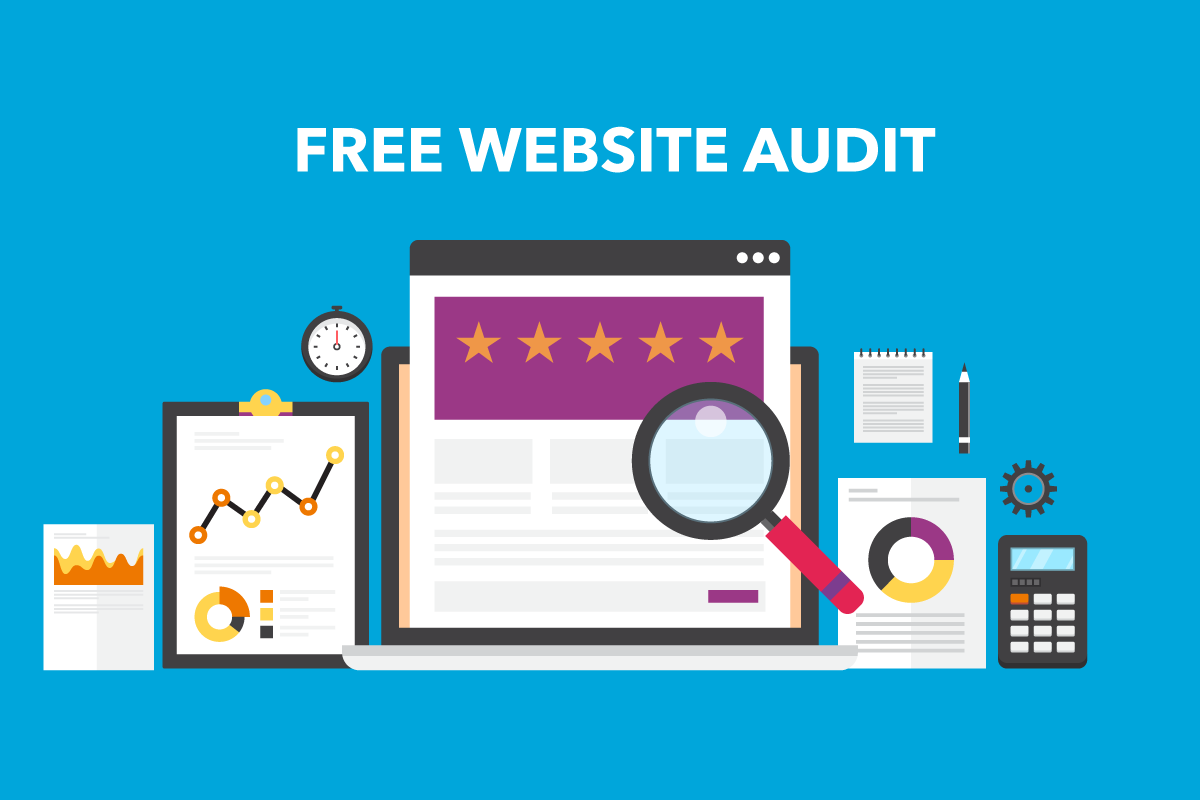How to Do a Website SEO Audit: A Step-by-Step Guide
An SEO audit is the process of evaluating the search engine optimization (SEO) health of your website. It’s an essential step in improving your site’s performance, boosting search engine rankings, and increasing organic traffic. Think of it as a health checkup for your website – identifying areas of improvement, fixing issues, and optimizing your site to rank higher in search results.
If you’re serious about improving your website’s SEO, conducting a comprehensive SEO audit is the first and most important step. In this blog, we’ll walk you through how to perform a detailed website SEO audit and how each step can help your site perform better.
Why Perform an SEO Audit?
Before jumping into the process, let’s answer the fundamental question: why is an SEO audit important?
- Identify Issues: It helps uncover potential problems that may be affecting your site’s rankings, from broken links to slow loading times.
- Improve User Experience: An audit can highlight UX issues, such as poor navigation or mobile-unfriendliness, which affect user engagement and ultimately SEO.
- Boost Traffic: By optimizing underperforming areas, you can increase organic traffic and improve visibility on search engines like Google.
- Stay Competitive: With search engine algorithms constantly evolving, an audit ensures that your website stays updated and competitive in your industry.
Now, let’s break down how to conduct an effective SEO audit.
Step 1: Crawl Your Website
The first step in any SEO audit is to crawl your website. Crawling is the process by which search engine bots (like Googlebot) discover and index pages. By crawling your site, you can identify potential issues like broken links, missing meta descriptions, and content gaps.
Tools You Can Use:
- Google Search Console: Offers insights into your website’s performance and technical issues.
- Screaming Frog SEO Spider: A desktop program that crawls your website, allowing you to analyze and fix SEO issues.
- SEMrush Site Audit: Provides an in-depth audit report, including crawlability, site health, and issues to resolve.
What to Check:
- Broken Links (404 Errors): Pages that link to non-existent resources can hurt your SEO. Identify and fix or redirect broken links.
- Redirects (301, 302): Ensure that your redirects are working correctly and aren’t creating unnecessary chains, which could affect your site’s performance.
- Duplicate Content: Duplicate content can confuse search engines, affecting your rankings. Check for pages with identical content and take corrective actions.
Step 2: Review On-Page SEO Factors
On-page SEO refers to the optimization of individual web pages to rank higher and earn more relevant traffic. This step focuses on optimizing content, HTML tags, and other elements of your pages to make them more search-engine friendly.
Key Elements to Review:
- Title Tags: Make sure each page has a unique, descriptive title that includes primary keywords. It should ideally be 50-60 characters.
- Meta Descriptions: Each page should have a concise meta description (155-160 characters) that includes relevant keywords and entices users to click.
- Headings (H1, H2, etc.): Check that your pages have properly structured headings. The H1 tag should describe the main topic of the page, while H2 and H3 tags break down the content into logical sections.
- Content Quality: Ensure your content is relevant, informative, and comprehensive. High-quality content is crucial for ranking.
- Image Optimization: Images should be optimized with alt text (describing the image) and compressed to reduce load time. This helps with accessibility and search engine visibility.
- Internal Linking: Ensure your pages are properly interlinked with anchor text that makes sense. Internal links help users navigate and also allow search engines to crawl your site more efficiently.
Step 3: Check Website Speed
Website loading speed is a crucial factor for both user experience and SEO. Slow-loading pages can frustrate users and lead to higher bounce rates, which can negatively impact rankings.
Tools You Can Use:
- Google PageSpeed Insights: Provides detailed insights into your website’s loading speed on desktop and mobile devices.
- GTmetrix: Offers a performance report with recommendations to improve speed.
- Pingdom: Monitors your site’s performance and helps you identify speed-related issues.
What to Check:
- Page Load Time: Aim for a page load time of under 3 seconds.
- File Size: Large images, JavaScript files, and CSS files can slow your website down. Optimize these files.
- Mobile Optimization: Since mobile traffic makes up a significant portion of online visits, ensure your site is mobile-friendly and loads quickly on all devices.
Step 4: Assess Mobile-Friendliness
With more users browsing the web on mobile devices than ever before, ensuring that your site is mobile-friendly is no longer optional – it’s essential. Google also uses mobile-first indexing, meaning it primarily uses the mobile version of your site to rank pages.
What to Check:
- Responsive Design: Ensure your website layout adjusts properly for different screen sizes (smartphones, tablets, etc.).
- Touchscreen Usability: Buttons and navigation should be easy to click on mobile devices. Test your site for any user experience issues.
- Mobile Page Speed: Since mobile internet connections can vary, ensure that your mobile pages load quickly and efficiently.
You can use Google’s Mobile-Friendly Test to check how well your site performs on mobile devices.
Step 5: Check Your Website’s Backlink Profile
Backlinks (or inbound links) are one of the most important ranking factors in SEO. A healthy backlink profile indicates to search engines that your content is valuable and trustworthy.
What to Check:
- Backlink Quality: Look at the quality, relevance, and authority of the sites linking back to you. Low-quality backlinks from spammy websites can harm your rankings.
- Anchor Text: Check if the anchor text (the clickable text of a link) is relevant and natural. Avoid over-optimization of keywords.
- Broken Backlinks: Identify any backlinks that point to broken pages on your site and fix or replace them.
Tools You Can Use:
- Ahrefs: Provides a comprehensive backlink analysis, including the number of backlinks, referring domains, and anchor text.
- Moz Link Explorer: Offers a link profile analysis with metrics like domain authority (DA) and page authority (PA).
- Majestic: Another popular tool for evaluating your backlink profile, providing data on trust flow and citation flow.
Step 6: Evaluate Site Security (HTTPS)
Having an SSL certificate (i.e., ensuring your website uses HTTPS instead of HTTP) is critical for both security and SEO. Google considers HTTPS a ranking signal, and an unsecured site (HTTP) will be flagged as “Not Secure” in browsers.
What to Check:
- SSL Certificate: Ensure that your site has an active SSL certificate. This encrypts data transferred between the user’s browser and your website, ensuring security.
- Mixed Content Issues: Ensure all resources on your page (images, scripts, etc.) are loaded over HTTPS. Mixed content (some elements loaded via HTTP) can harm both security and SEO.
Step 7: Analyze Site Analytics and Performance Metrics
Finally, analyze your site’s performance through tools like Google Analytics and Google Search Console. These platforms offer valuable insights into how your website is performing in terms of traffic, user behavior, and keyword rankings.
Key Metrics to Review:
- Organic Traffic: Monitor how much traffic your site is getting from search engines. Are there any drops in traffic that correlate with changes on your site?
- Bounce Rate: A high bounce rate may indicate that visitors aren’t finding what they expect on your site, which could signal an issue with content or user experience.
- Keyword Rankings: Review the keywords you’re ranking for and their positions. Are there keywords you’re not ranking well for but should be?
Conclusion: Performing an SEO Audit is Crucial for Your Success
A comprehensive SEO audit provides valuable insights into how your website is performing, what needs fixing, and where opportunities for improvement lie. Whether you do it yourself or hire an SEO expert, an audit is an essential step in maintaining and improving your website’s SEO health.
By following the steps outlined in this guide, you can identify technical issues, optimize on-page elements, enhance user experience, and ultimately improve your site’s rankings and visibility on search engines.
Need help with your website SEO audit? Contact us today, and let’s get started on optimizing your site for better performance!




